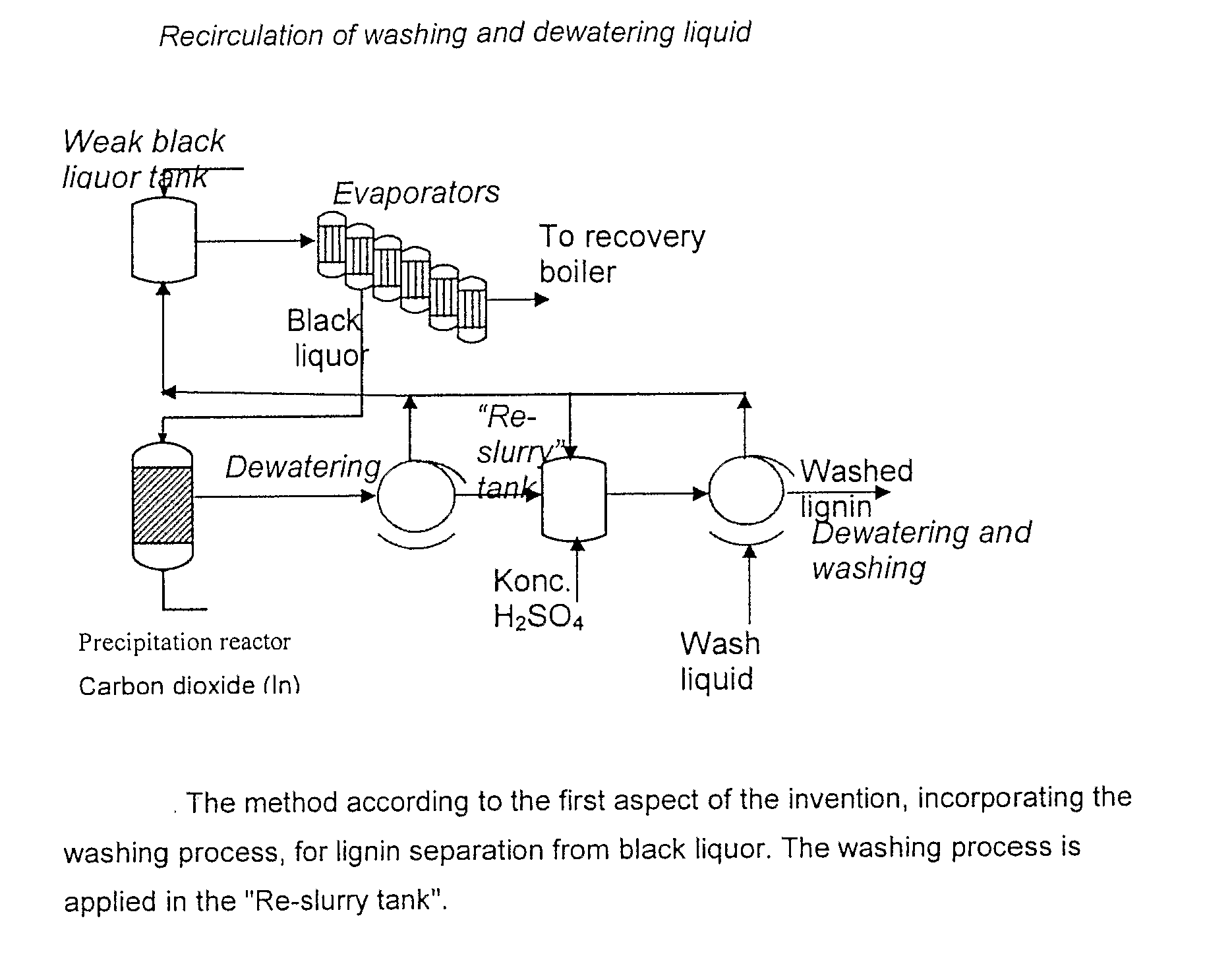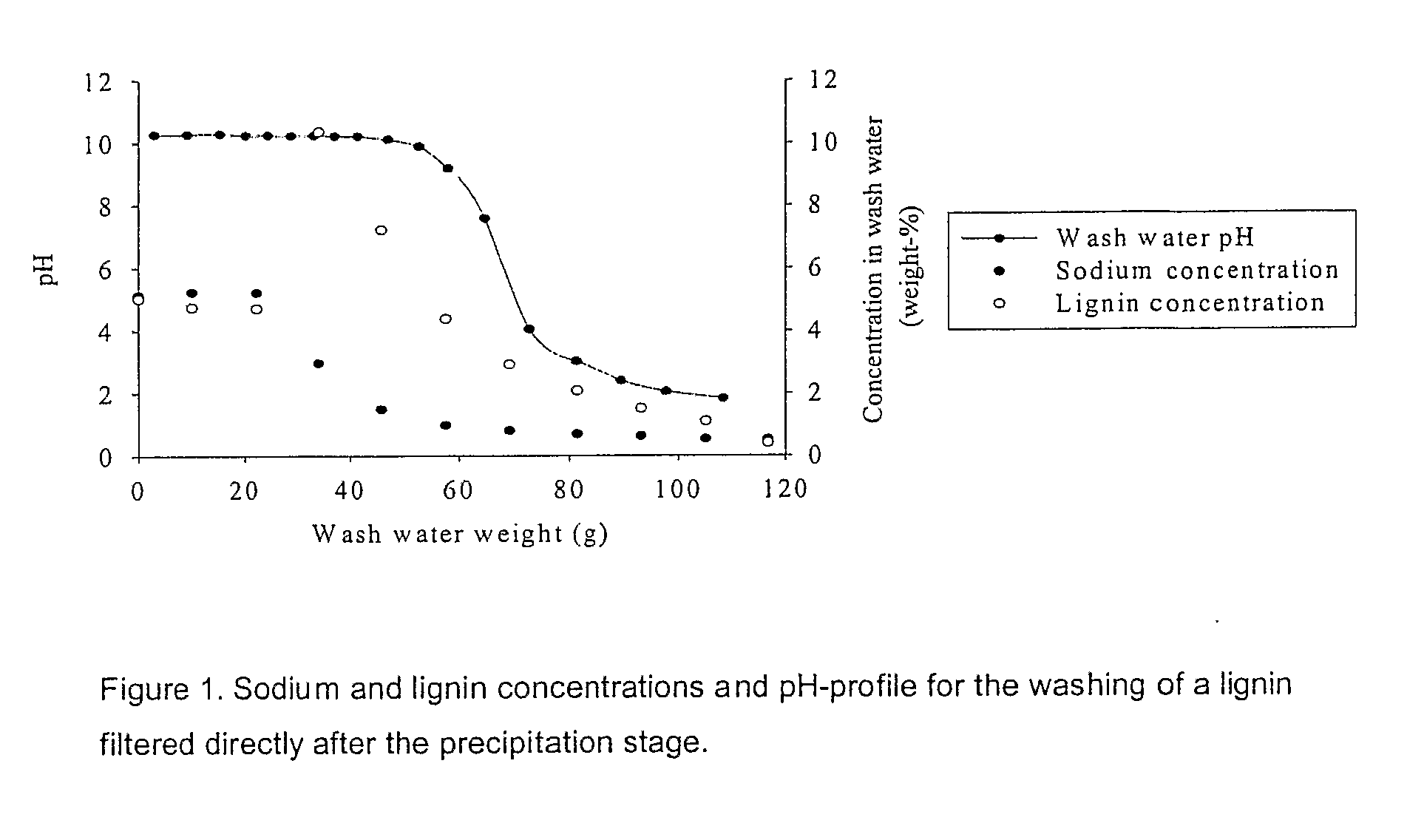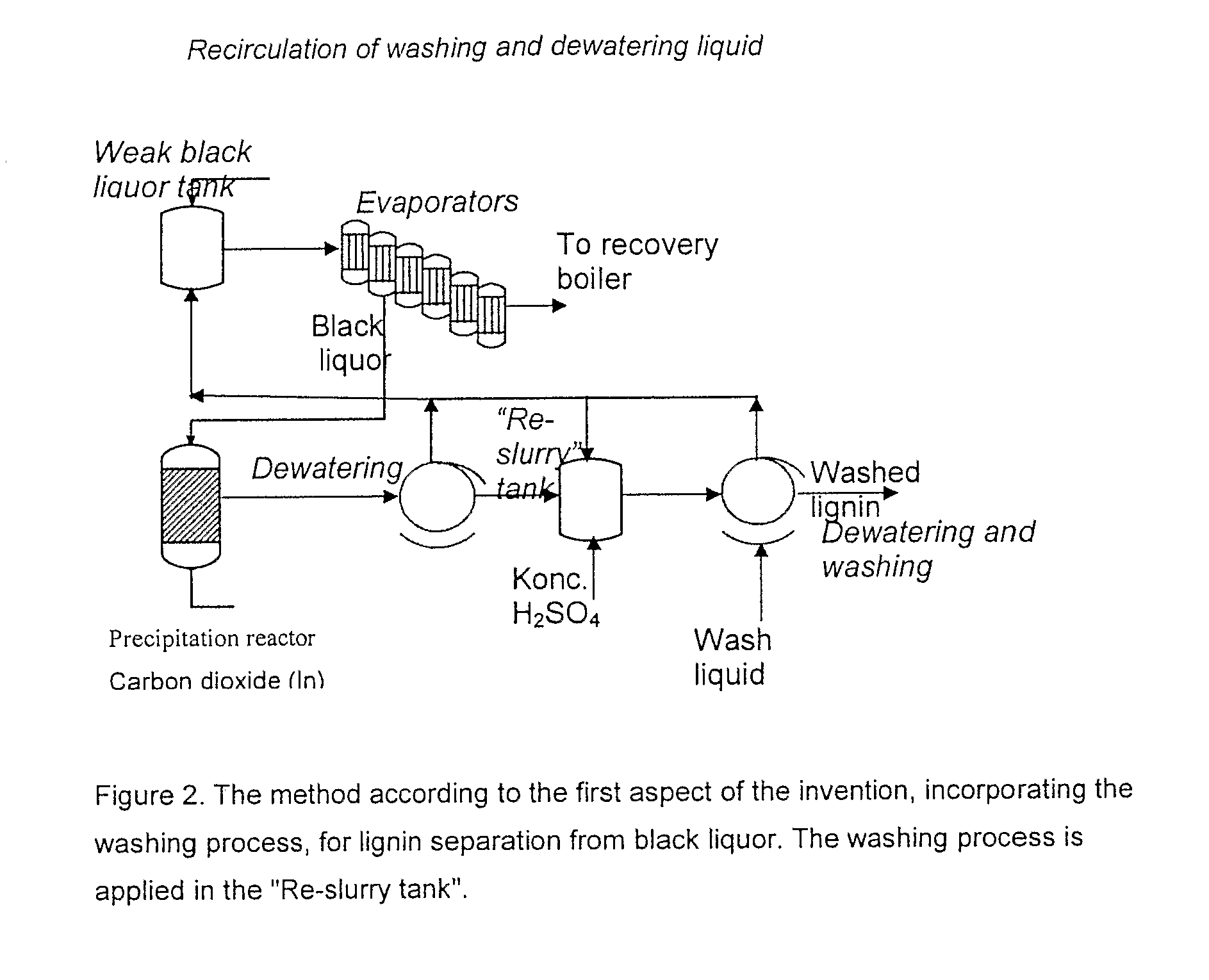Method for Separating Lignin from Black Liquor
a technology of black liquor and lignin, which is applied in the field of separating lignin from black liquor, can solve the problems of limiting the production of pulp in the mill, affecting the efficiency of the pulp mill, and affecting the efficiency of the pulp mill, and achieving the most expensive (instrumental) unit in the pulp mill
- Summary
- Abstract
- Description
- Claims
- Application Information
AI Technical Summary
Benefits of technology
Problems solved by technology
Method used
Image
Examples
example 1
Comparative
[0035] In laboratory studies of a separation of lignin according to previously known techniques as set out in the background above, lignin was precipitated from black liquor through acidification (with carbon dioxide or sulphuric acid). The suspension obtained was filtered, after which a displacement washing was carried out where the wash water was added on top of the filter cake and was pressed through it under an applied pressure. The result was in some cases a “pure” lignin (sufficiently clean for qualified usage as a fuel), but relatively large problems arose through blockage of the filter cake. The flow of wash water was reduced to almost zero in some tests. In other tests, an uneven washing of the filter cake occurred with high concentrations of inorganic substances (primarily sodium) in the lignin as a result.
[0036] These problems were shown to depend on re-dissolution of the precipitated lignin during the actual washing procedure, when the ionic strength in the ...
example 2
[0037] The method of the first aspect of the invention, including the washing process as set out earlier, has been studied experimentally on a laboratory scale with good results, since the pH in the suspension after re-slurrying and the pH in the wash water have been kept below 4. Under these conditions, it has been possible to carry out the washing without blockage and with a very clean lignin as a result. The sodium contents in the washed lignin have varied between 0.005 per cent by weight (for pH 2 in the wash water and suspension) and 0.09 per cent by weight (for pH 3.5 in the wash water and suspension). At a pH of 4 and above in the wash water, blockages were again observed in the filter cake / medium, probably because of re-dissolved lignin which markedly reduced the flow of the wash water. Even in these cases, the sodium contents in the washed lignin could be reduced to ca. 0.25%. A number of test series have been carried out, with reproducible results.
example 3
[0038] A further example is here given of an application of the method according to the first aspect of the invention described above (see also FIG. 3). In a pulp mill with a production of 2000 adt / day, 30% of the black liquor is taken from the evaporation at a dry content of 30%. This is acidified to pH 10 at room temperature with carbon dioxide (120 t / d) with stirring at a temperature of 80° C. The resulting slurry is dewatered in a filter press equipment, after which the filter cake is pressed and blown with air to a dry content of ca. 70%. The filtrate is returned to the recovery system of the mill. The filter cake is converted into a slurry in re-circulated washing liquor from the other filter press and is acidified further to pH 4 with sulfuric acid (96%, 12 m3 / d). The slurry thus obtained is dewatered in a filter press and pressed. The filtrate is returned to the mill's recovery system. Wash water is added and the lignin is washed by displacement washing (541 ton / d washing li...
PUM
| Property | Measurement | Unit |
|---|---|---|
| Acidity | aaaaa | aaaaa |
| Acidity | aaaaa | aaaaa |
| Strength | aaaaa | aaaaa |
Abstract
Description
Claims
Application Information
 Login to View More
Login to View More - R&D
- Intellectual Property
- Life Sciences
- Materials
- Tech Scout
- Unparalleled Data Quality
- Higher Quality Content
- 60% Fewer Hallucinations
Browse by: Latest US Patents, China's latest patents, Technical Efficacy Thesaurus, Application Domain, Technology Topic, Popular Technical Reports.
© 2025 PatSnap. All rights reserved.Legal|Privacy policy|Modern Slavery Act Transparency Statement|Sitemap|About US| Contact US: help@patsnap.com



